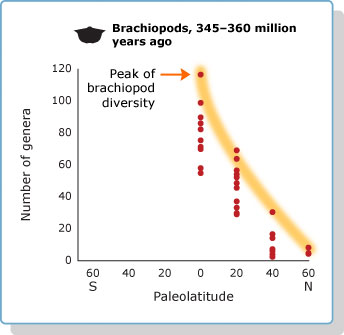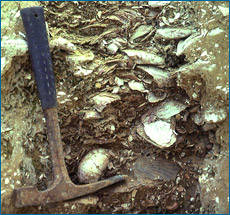Based on the data we just saw, it looks like the tropics have been a diversity hotspot for millions of years. Most of the graphs we saw showed a peak at low latitudes.

But did you notice anything unusual about the sorts of species we were looking at? Brachiopods, ammonites, foraminiferans, and bivalves are all shelly ocean-dwellers. What about the mammals, insects, birds, and all the other animals plants that live on land? Where have they been living for the hundreds of millions of years they’ve been around?

Biologists would love to have this sort of information on all organisms, but it’s difficult to come by because fossilization on land is such a chancy process. Land animals (and many ocean animals — like fish) are likely to be eaten or rot away without leaving behind any fossil evidence at all. Shelly ocean-dwellers, on the other hand, have a remarkably complete fossil record. Their shells are tough to destroy and many of these animals live in situations where their shells are likely to fossilize.
We don’t yet have enough fossils of land-dwellers to be very confident about where they all lived in the past — but we have so many fossils of shelly ocean dwellers, like clams, that we can be pretty sure that they’ve been packing into the tropics for millions of years. But why? What’s so great about the tropics?

